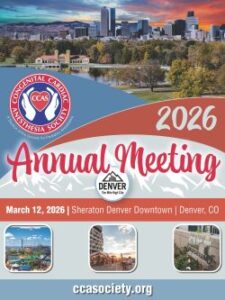Author: Nicholas Houska, DO - University of Colorado - Children’s Hospital Colorado
An 8-day-old boy born with skeletal abnormalities, congenital heart disease, hypotonia, and facial dysmorphisms presents for cardiac surgery. Genetic testing reveals a pathogenic variant in the KMT2D gene consistent with a diagnosis of Kabuki syndrome. Which of the following types of congenital heart disease is MOST likely to be present?
EXPLANATION
First described in 1981, Kabuki syndrome is a heterogeneous disorder associated with multiple congenital defects including heart disease, developmental delay, hypotonia, renal malformations, skeletal anomalies, and distinct facial anomalies (laterally sparse and arched eyebrows, long palpebral fissures, large and everted ears, eversion of the lateral eyebrows, and pillowed lower lip).
Prior to 2010, the diagnosis of Kabuki syndrome was based on the phenotypic manifestations above. However, in 2010, the first and most common causative (55-80%) gene, KMT2D, was identified. Since then, three additional genes have been identified as pathogenic variants in a minority of Kubuki patients.
Retrospective studies describe the presence of congenital heart disease (CHD) in 58-70% of patients with Kabuki syndrome. In patients with Kabuki syndrome and CHD, the most common diagnoses are left-sided obstructive lesions (35-47%). The most common left-sided lesions include coarctation of the aorta (17.1%) and hypoplastic left heart syndrome (10.5%). Other left sided-obstructive lesions include aortic stenosis, mitral stenosis, and Shone’s complex. Septal defects are the next most common heart defects, either as a primary diagnosis or in conjunction with the above obstructive lesions. The remainder of children with Kabuki syndrome and CHD exhibit a heterogenous spectrum of cardiac lesions including conotruncal defects, atrioventricular canal defects, and right sided obstructive lesions. Of the identified genetic mutations associated with Kabuki syndrome, the KMT2D (MLL2) gene has been found to be most frequently associated with CHD.
As indicated above, left-sided obstructive lesions, such as coarctation of the aorta and Hypoplastic Left Heart Syndrome, are most commonly observed in patients with Kabuki syndrome versus Tetralogy of Fallot or Transposition of the Great Arteries.
REFERENCES
Yuan SM. Congenital heart defects in Kabuki syndrome. Cardiol J. 2013;20(2):121-4. doi: 10.5603/CJ.2013.0023. PMID: 23558868.
Digilio MC, Marino B, Toscano A, Giannotti A, Dallapiccola B. Congenital heart defects in Kabuki syndrome. Am J Med Genet. 2001 May 15;100(4):269-74. doi: 10.1002/ajmg.1265. PMID: 11343317.
Digilio MC, Gnazzo M, Lepri F et al.Congenital heart defects in molecularly proven Kabuki syndrome patients. Am J Med Genet A. 2017 Nov;173(11):2912-2922. doi: 10.1002/ajmg.a.38417. Epub 2017 Sep 8. PMID: 28884922.
